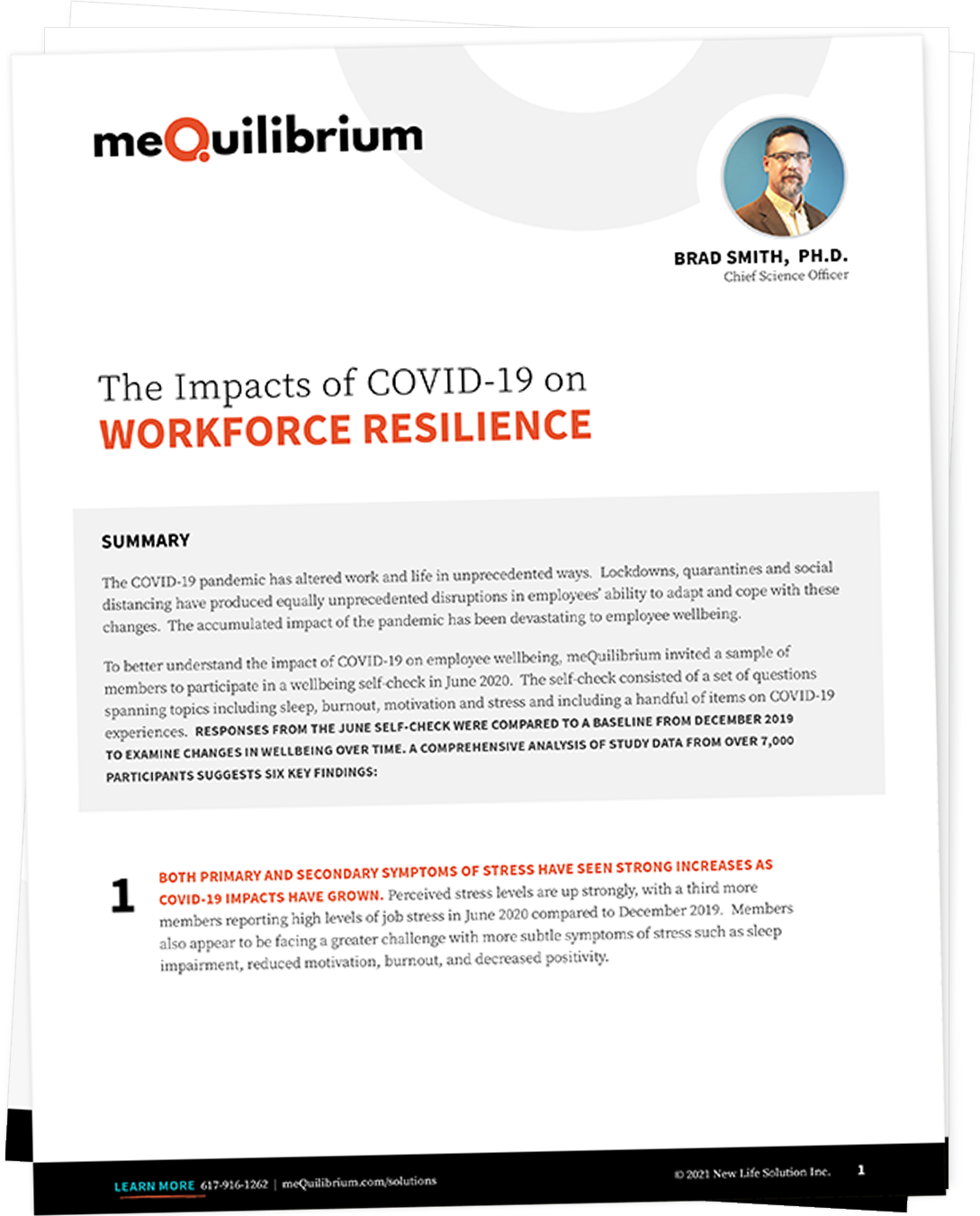Managing remote teams, once an exception, is becoming the new rule. According to Gallup, three in five U.S. workers who have been doing their jobs from home during the coronavirus pandemic would prefer to continue to work remotely as much as possible, once public health restrictions are lifted. And 52 percent of managers (in the U.S.) say they will allow their employees to work remotely more often as a result of this experience. This dramatic shift presents new challenges for managers and organizations—as well as new opportunities to improve communication and strengthen processes that keep teams performing and agile.
There are several factors that can make remote work especially demanding, impacting the mental and emotional well-being of the team, and driving even high-performing employees to experience declines in job performance and engagement. They include:
- Work/Life Imbalance: Employees feel overwhelmed by competing demands
- Social isolation: Remote work has increased loneliness, which can lead to burnout, anxiety, or depression
- Lower Engagement: Employees lose connection to others and the “why” of their work and disengage
- Lack of Face-to-face Accountability: Remote work can leave employees feeling either unrecognized or micromanaged
- Unclear Expectations: Employees can feel confused and frustrated by a lack of clear, transparent communication
In addition, many managers feel anxious in response to a decrease in face-to-face supervision. How often should you check-in? Too much and your team feels micromanaged; too little, and they may feel underappreciated.
How Managers Can Support Remote Employees
As much as remote work can be fraught with challenges, there are also relatively quick and inexpensive ways that managers can help their teams adapt. Here is our 4-step process to manage remote teams for agility and performance.
1. Create Transparency
In the absence of face-to-face supervision, it is more important than ever to form a foundation of transparency, which builds trust. First, model transparency and lead by example. For example, communicate when and why priorities or goals change, demonstrate trustworthiness by following through on your commitments, and be transparent about your own remote work challenges—creating space that invites others to do the same. Then, begin to mentor transparency on your team. For example, be honest and immediate with feedback and give public credit to team members for their work and accomplishments.
2. Manage Isolation
Loneliness is one of the most pervasive challenges of remote work. If unaddressed, it can create a cascade of disengagement that one study showed can derail productivity by up to 21 percent. It also takes a serious toll on your team members’ mental health and well-being.
Because of the stigma that surrounds loneliness, your team members may be less vocal about how this issue affects them. What’s more: The way that people “present” is not always an accurate reflection of how they feel. For example, extroverted team members may seem to be coping well, when in actuality they are reaching out more to compensate for feelings of isolation. Introverted team members may appear self-sufficient while quietly craving more interaction.
All of this makes loneliness challenging to address. Schedule regular one-on-one check-ins with your reports, and ask them how they’re doing, if they feel supported, and if they are having enough interactions with the team.
3. Boost Engagement
When your team is physically disconnected, they run the risk of disconnecting from goals, mission, and purpose—and their work. One study found that half of all U.S. employees don’t know what is expected of them. Without clear direction, team members feel unfocused and overwhelmed. This can lead to widespread stress and burnout.
Instill a strong sense of purpose to help them reconnect. For example: How would you explain to a new hire the role your team plays in helping the company achieve its goals? Articulate this for yourself and then share it out to the team. Next, define how your team’s current projects or tasks connect to this mission. Make that connection to the “why,” and you’ve established purpose.
4. Create a Remote Team Charter
Create what I call, a remote work team charter, where you collaboratively establish the ground rules for how your team works best and what is expected of everyone—including you. Discuss the following as a team, draft your co-created answers, and then communicate them often and repeatedly so that you have a foundation of the agreed-upon rules of the road. This will help define much-needed expectations.
- What hours work best with regard to group calls or meetings (taking into account any time zone differences)
- Which technology platforms should we use for which tasks and processes?
- What have been the biggest challenges in working remotely?
- When do you find you do your best work? Are you an early person? A night owl?
- Where are you feeling stuck or frustrated? What might help?
In the absence of face-to-face supervision, it is more important than ever to form a foundation of transparency. As leaders and organizations, our job is not simply to monitor activity but help your team stay connected to each other and their mission, and support and celebrate successes.
Be a Change Champion for Organizational Resilience
To be a good manager, you need employer support. In fact, now more than ever, during COVID, our research and science team found that perceptions of employer support significantly impacted the rate of increased job stress before COVID when compared to this past summer.
The signals created with support matter. Become a champion for making real change in your company that supports the diverse needs of employees, whether managing remote teams or supporting working parents. Show you care by investing in organizational resilience today.

